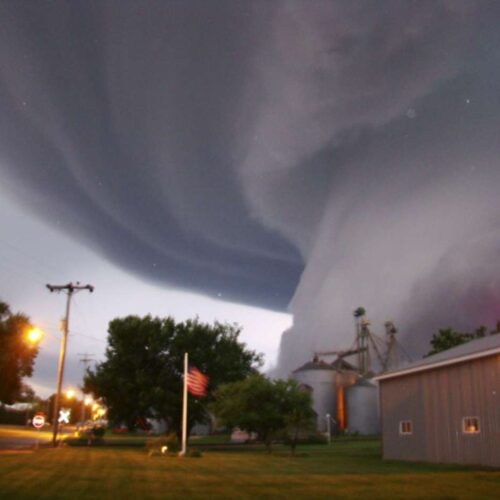Introduction
The number of deaths attributed to natural hazards in the U.S. has declined, even as the costs of major disasters like tornadoes are on the rise. Insurance industry analysts say that tornadoes, severe thunderstorms, and related weather events have caused nearly 57 percent of all insured catastrophe losses in the United States since 1953. According to analysts, losses of $1 billion or more from a single tornado are becoming more frequent.
The monster tornado in Joplin, Mo., last month killed more than 150 people and damages could reach as high as $3 billion.
According to the National Science and Technology Council, “Americans today are more vulnerable than ever to severe weather events caused by tornadoes, hurricanes, severe storms, heat waves, and winter weather.”
Population changes, wealth distribution, construction of dense infrastructure in areas prone to severe weather have increased losses resulting from tornados and severe storms.
The population could be less vulnerable to the effects of severe weather if the federal government expanded funding for improved detection and warning systems, fostered efforts to build more resilient buildings and infrastructure, and financed research and development to better understand why and where severe thunderstorms and tornadoes occur.
Congress passed the National Windstorm Impact Reduction Act in 2004, which was aimed at reducing loss of life and property from tornados and severe thunderstorms, but it is unclear whether the program made progress toward its objective. Congress never approved a specific appropriation. The four agencies responsible for the program—the National Science Foundation, the National Institutes of Standards and Technology, NOAA, and the Federal Emergency Management Agency —did not identify a line item for the program in their annual budgets.
“Lacking a specific appropriation for the National Windstorm program and a specific request for funding from each agency in their annual budget justification, it is difficult to assess what agency activities currently contribute to the goals of the program,” the Congressional Research Service said.
Authorization for the program expired at the end of 2008, but legislation introduced in the 112th Congress would reauthorize the wind hazards program through 2015. The total authorized amount for the program agencies from 2011 through 2015 would be $136.71 million, compared to the $72.5 million authorized under the previous program.
Weather forecast and warning predications is an essential component to the proposed National Windstorm bill. Currently, the National Weather Service’s local forecasts and warning program focuses on short-term weather prediction. Some research organizations suggest that reorienting research toward long-term loss reduction efforts for weather-related hazards, like mitigation techniques and R&D focused on reducing fatalities and property loss, could provide more solutions.
According to the National Science and Technology Council, the nation’s focus on disaster response is “an impractical and inefficient strategy for dealing with these ongoing threats. Instead, communities must break the cycle of destruction and recovery by enhancing their disaster resilience.” NSTC recommends implementing hazard mitigation strategies and technologies, like developing advanced construction materials and structural systems. The report also recommended land use and zoning regulations that recognize the risk of natural hazards, which is usually up to local and state governments.
According to CRS, observers and stakeholders agree that types of R&D needed, like integrated data and observation systems, improved remote sensing capabilities, better modeling capability, are necessary to improving understanding of severe storm and tornado formation.
The House added a requirement to the proposed bill that manufactured housing units be equipped with a NOAA weather radio to give residents a better chance of receiving tornado warnings. Mobile home deaths accounted for an average of 44 percent of all deaths caused by tornadoes between 1985 and 2005.
FAST FACT: As of May 23, the NWS estimated that approximately 1,000 tornadoes have occurred this year. The yearly record was set in 2004 at 1,817 tornadoes and the overall yearly average for the past decade is 1,274 tornadoes.
Read more in Environment
Environment
EPA appears firm on limiting air toxics at coal power plants
Industry, Republicans aim to stall what agency considers life-saving limits on mercury and other emissions
Environment
U.S. regulators opening up on flawed nuclear power plant policing
From fire hazards to coziness with industry, some concerns languished for years until Fukushima


Join the conversation
Show Comments